Introduction
For the majority of people, the good life unfolds in a fairly straightforward manner and it is rare that we stop and analyse what it is and how it happens.
However, for those people we care about who have been cut out of this or who are at risk of being cut out of the good things of life, there are a number of things that can be done to intentionally ‘bring the good life to life’.
In this page we will…
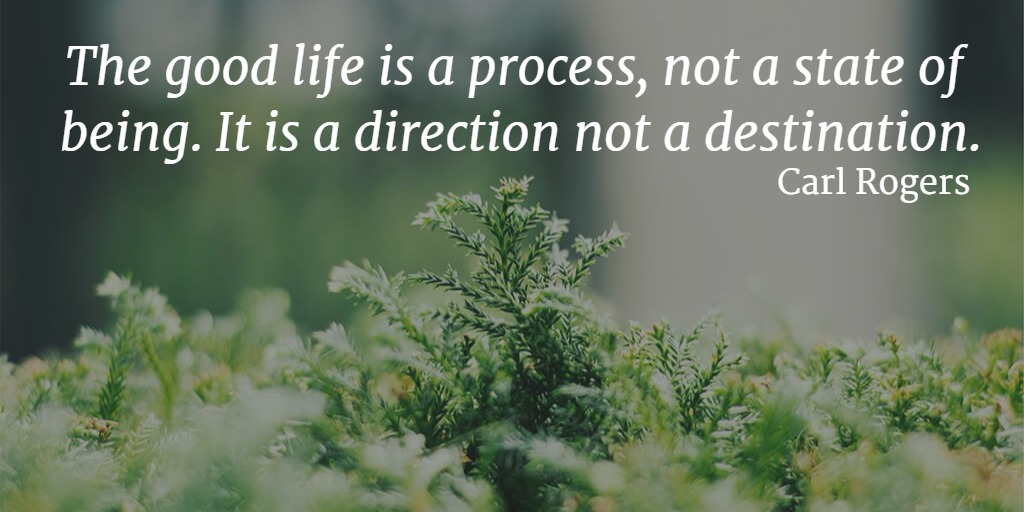
START WITH THE PERSON
It may seem obvious, but when helping anyone to live a life that is meaningful and enriching for them it is essential you begin with them. It means;
- focussing on their unique gifts, talents and interests
- working out with them what they want from their life
- understanding what they might need to live the life they wish to live, and
- planning with them about how those needs might be met
When this is kept at the heart of all aspects of a persons life then it is little surprise that it will produce richer, more satisfying lives for people.
For a person with disability this means their need or request for support can be met in a way that is centred on them and the unique expression of their particular needs. It requires a deep listening to, and honouring of, what the person says they need to live their own life in the community they choose. This means they are able to be in control of their own life, with the support that they need to do that.
There are now many examples of very successful support arrangements where the person, regardless of their level of impairment, decides how the support is to be provided and by whom. However, as many of our formal services were founded and funded to meet the needs of groups of people, changing our thinking and practice to a truly person centred approach is very challenging.
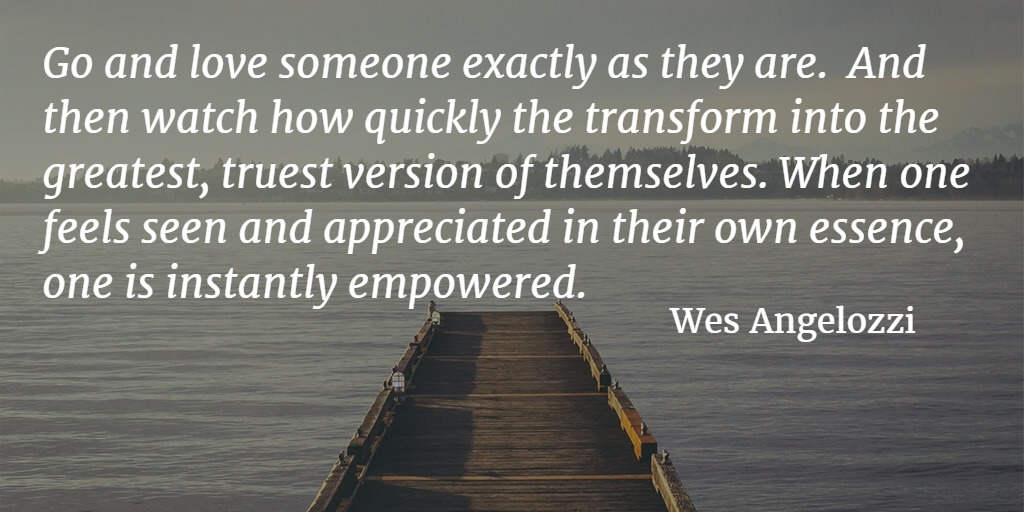
CRUcial Times 30 President’s Report
Mike Duggan
![]() It is this deep understanding which enables us to see what a person values in life and what is unimportant, to imagine what someone might need in life to make it rewarding and satisfying, and to appreciate what is missing in the other person’s life and how it might be fulfilled.
It is this deep understanding which enables us to see what a person values in life and what is unimportant, to imagine what someone might need in life to make it rewarding and satisfying, and to appreciate what is missing in the other person’s life and how it might be fulfilled.
HAVE HIGH EXPECTATIONS
It might sound like a contradiction to say that we need to have high expectations so that people will lead an ordinary life. Too often people dismiss expectations as being unrealistic before they have even investigated what is possible. When people who live with disability encounter a judging, unwelcoming world, how critical it is that the people around them expect much of them and for them.
We have the power to choose to engage in the upward spiral of high expectations and better quality of life or the downward spiral of low expectations that waste lives and extinguish potential. Low expectations often come from misplaced kindness and protection; from a perception that the person who lives with disability is so different that they would not want, need or be capable of experiencing the same things as their fellow human beings.
For example, expectations that they need someone with them every minute of the day; that they will never be able to learn or work; that they can’t do anything for themselves or that they could not cope with love and loss can make this so.
It’s an ordinary life that people seek not a perfect life – we need to be cautious in the desire to assist, that we don’t put people in the spotlight where they are expected to do more; achieve more and behave better than their peers who don’t have disabilities. If one has a disability it seems that jobs should be for life; apartments should be pristine; plans should never change.
Some of the stories shared on this website did not just happen because someone believed they could. However, with effort, some setbacks and perseverance, it is also true to say that they only happened because someone believed they could.
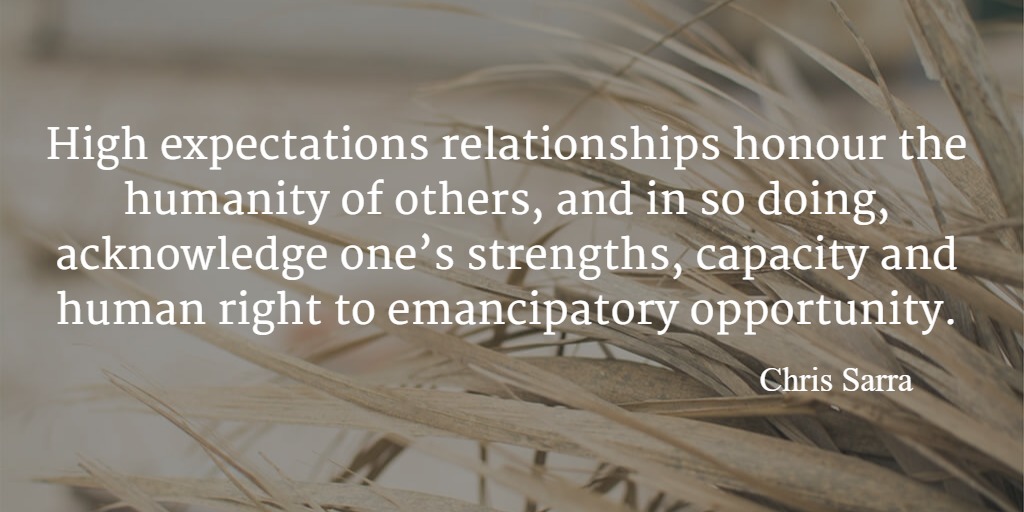
Expect the Impossible
Marlene Katene
![]() This is how I assess whether these people enter my life or not. If they can embrace my dreams, visions and goals then they are welcomed on board to be part of the team. This team is going to support me moving in the way I want to head. As my life is constantly moving and changing directions it is vital I don’t waste time with people who may place their limiting expectations upon me.
This is how I assess whether these people enter my life or not. If they can embrace my dreams, visions and goals then they are welcomed on board to be part of the team. This team is going to support me moving in the way I want to head. As my life is constantly moving and changing directions it is vital I don’t waste time with people who may place their limiting expectations upon me.
The Empowering Value Of “Life-Giving” Assumptions About People
Michael Kendrick
![]() We must be exceedingly careful whenever people with disabilities are asked to accept and live lives that are clearly so deprived when compared to what most people expect for their lives. Better that we aim for a way of life in which their turn at the table of life’s opportunities comes early and often.
We must be exceedingly careful whenever people with disabilities are asked to accept and live lives that are clearly so deprived when compared to what most people expect for their lives. Better that we aim for a way of life in which their turn at the table of life’s opportunities comes early and often.
Expectation: An invitation not a condemnation
John Buckley
![]() Expectation need not be a weight. It can be an invitation: an invitation to grow, an invitation to explore, to seek, to realise …An invitation asks, not demands. It accedes, not condemns. It offers freely – offers the freedom of acceptance, equally with refusal. It offers, not demands – so should expectation be.
Expectation need not be a weight. It can be an invitation: an invitation to grow, an invitation to explore, to seek, to realise …An invitation asks, not demands. It accedes, not condemns. It offers freely – offers the freedom of acceptance, equally with refusal. It offers, not demands – so should expectation be.
CRAFT AN AMBITIOUS AND POSITIVE VISION
Aspirations and Goals
Having a vision of what is important in making up a Good Life lets us take control and be clear about the direction we are heading and directly influence our imaginations of what is possible. This is why it is so important that the vision not only reflects the person, but is full of hope and possibility of a life that is rich with hope, possibility and potential.
For people with disability, others may help them hold and develop this vision. If that vision is too small or apologetic or limited then we run the risk of compromising the person’s future. Having a group of people working on naming and writing the vision can help us all to be braver and they can also help with carrying it out now or carrying it on in the future.
While, the word vision can sound very grand or somehow mystical it simply involves looking forward as much as we possibly can to see what’s over the horizon and, to the extent that any of us can control what happens in life, being as ready as we can be.
Most people with disabilities or their parents already have or had a vision; it might not have been written down or said out loud and it may have been dinted and diminished over time, but with time to sit and reflect on the person and their future and reflect on what is valued for everyone else in their family and community, a positive vision can be recalled.
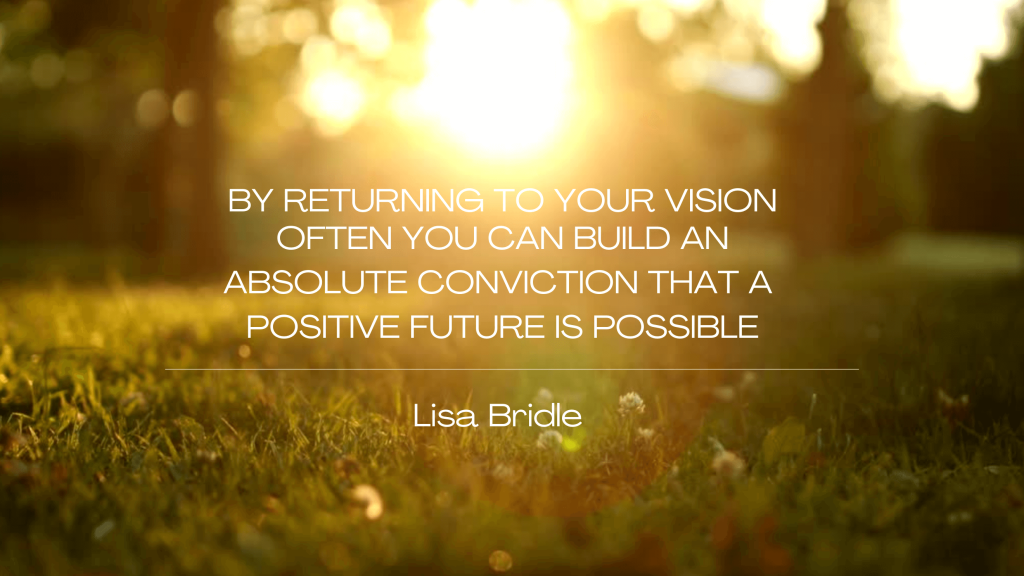
Clarity of Vision
Wendy Stroeve
![]() You need to share the vision with others. Your family, your friends, your acquaintances, the professionals you come into contact with, all those people who are so fond of asking you questions about your family member’s life and future. The more this vision of how someone wants their life to be is articulated, the more it becomes part of a real plan.
You need to share the vision with others. Your family, your friends, your acquaintances, the professionals you come into contact with, all those people who are so fond of asking you questions about your family member’s life and future. The more this vision of how someone wants their life to be is articulated, the more it becomes part of a real plan.
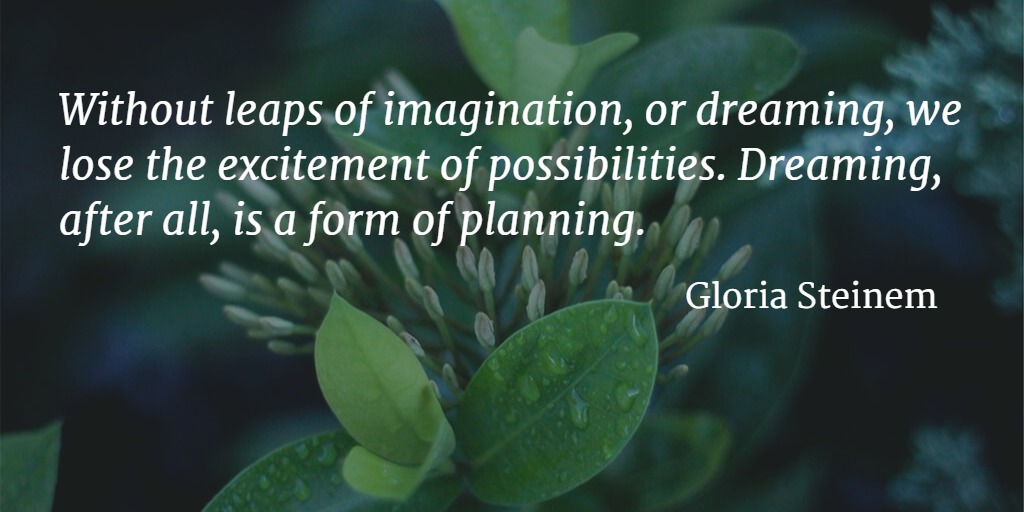
Useful Webpage
Resourcing Inclusive Communities - Developing a Vision
Resourcing Inclusive Communities (formerly Resourcing Families) is an initiative of Family Advocacy NSW that provides information and resources for families to support their family member with disability to live a meaningful and typical life as a valued member of their community.
In this page they share wisdom from families who crafted a vision with their son or daughter and how this has been used in pursuit of the good life. It also includes some tools to assist in your thinking as you create your own vision.
GET PLANNING
Making Your Vision a Reality
We appreciate that the reality for many people with disability is that they require assistance to do what they want to do with their life and that this assistance is likely to be provided by a number of people. Ensuring that all these people are working in the same direction and that that direction is what the person actually wants is not easy and thus some formalising of the direction and a plan and the agreed steps to get there can be helpful.
This is slightly different to the general population who can usually afford to have a vague life plan in their heads and modify it as they go. They are not as dependent on others to bring the plan to life and the consequences of not having a plan are also not usually so great. When people with disability, and the people closest to them are not setting the agenda, then others who don’t know the person will set the vision of what’s possible and it will be based solely on their disability needs rather than who they really are.
The plan follows the vision because when we know what we want we can work out the steps to start making it happen. There are a variety of planning tools available but whatever you use the basic premise is to start with a big vision, full of possibilities and then break it into small achievable steps. Setting time aside to plan, inviting others to be involved and engaging someone to assist with the conversation can all be helpful. Obviously the particular needs that result from a person’s disability need to be taken into account when planning, but disability needs should not be addressed as the first or only needs that the person has. If we only see the person through the lens of disability we risk missing the fuller, richer picture of who the person is.
As the goals on that plan are achieved or partly achieved or as they are tried and found wanting then the plan will be modified and new plans made. This is what most of us do in life; the difference being that we may not always be so conscious or formal about it.
This is likely to be a broad vision and plan encompassing the many aspects of life, not just the paid service provision. The question of how a service plan can fit in to a person’s broader life plan is an important one, but it is crucial to highlight that these are different types of planning and they have different purposes and priorities. This broader planning is not dependent on funding or formal service, but when people have done this planning for themselves, then they are much better equipped to make good use of any funded supports that are available.
Moving Past the Limits in Person-Centred Planning
John O’Brien
![]()
Sensing the next step toward good things in life is one thing. Taking that step is another. Taking the next step engages all the constraints and contradictions that shape the person’s world.
Some of these constraints and contradictions are internal: habitual ways that we nail our own feet to the floor at the moment we want to dance. Others are external: social and systemic expressions of the prejudice that faces disabled people as they claimtheir rightful places in the world. Before breaking the planning circle, people will summon their courage by committing themselves to taking action and supporting one another to deal with contradictions and constraints.
Service Planning
Deborah Naughton
![]() When I spoke to [Wendy] about using her story in this article… I asked her how she felt about life now and what she thought about the planning process. She said she felt “good inside”, “I’ve improved my skills and relationships,” and that planning helps “you see clearly what you can do with your life”.
When I spoke to [Wendy] about using her story in this article… I asked her how she felt about life now and what she thought about the planning process. She said she felt “good inside”, “I’ve improved my skills and relationships,” and that planning helps “you see clearly what you can do with your life”.
Further Reading
A brief overview of the elements of person centred approaches.
Judith Ellis, Trudy Van Dam and Jane Sherwin
Useful Webpage
Pearls of Wisdom - Creating a Plan
Pearl is a storehouse of resources and information for people who are already directing their own funding in Queensland or who are considering taking up this option.
This page explores what is involved with creating a plan. It covers topics such as strategies, processes, stories and links to other useful websites.
There are many different ways to record your planning. Many organisations prefer to use a particular planning tool or template. None of these are ‘magic bullets’. Any planning tool or template will include questions or guidelines to prompt your thinking.
Stop for a moment and think about the ways you identify yourself. You will undoubtedly include your relationships, your work, your hobbies and other related aspects of these. Within each of these are roles, such as; teacher, good cook, gardener, artist, wife, athlete, quilt maker, snappy dresser. This is one of the ways we see ourselves and how others see us.
Roles have great power; both personally, through our identity, and inter-personally in the way we identify with others. They influence first impressions and are a foundation for how we relate to eachother.
As with everyone else, roles are very important for people with disability and need to be when supporting them. Being in a role properly is more than just having a title – it is how you look, how you act, what you do and where you are. Imagine a bus-driver- what are they wearing, how are they behaving, what are they doing, where are they? Imagine now a good neighbour, a favourite aunt, a scary man or a criminal and ask yourselves the same questions. These are all roles and we we can imagine how people will be in those roles. When people are not properly in a role then they look out of place, incompetent and sometimes threatening – this will influence how you approach them.
Not all roles are positive ones. Some roles can give the impression someone is incompetent, dangerous, perverted and other traits that are greatly undesirable. These roles are not a reflection of the persons true character, but rather how they are perceived. People in these roles will have greater struggles in having access to the good things in life. These negative roles tend to be held by people on the fringes of society and many of them are held by people with disability and make them even more vulnerable.
Developing positive and valued roles are a vital element to consider in planning and supporting people with disability. They can be the difference between being a spectator and being involved. Being noticed and being welcomed. Being feared and being loved.
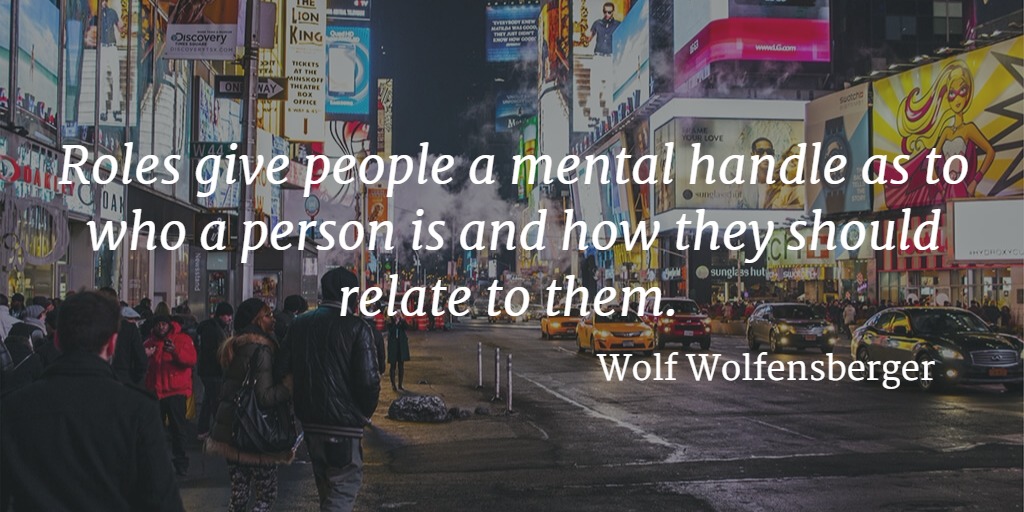
The purpose of life is a life with purpose: creating meaningful futures through valued roles
Meg Sweeney and Jane Sherwin
![]() We were confident that this was an opportunity for the Leisure Centre as well as Joscelyn. She could demonstrate her commitment to pursuing childcare through her past studies and was a young local woman who wanted to make a contribution to her community. Our approach was not on a whim or looking for a time filling activity but a very well thought through valued role to fit Jos and her individual circumstance.
We were confident that this was an opportunity for the Leisure Centre as well as Joscelyn. She could demonstrate her commitment to pursuing childcare through her past studies and was a young local woman who wanted to make a contribution to her community. Our approach was not on a whim or looking for a time filling activity but a very well thought through valued role to fit Jos and her individual circumstance.
Workbook
(Opens in new window)
This handbook helps to explain one of the key concepts that are crucial to helping people who require support to have a good life in the community — the importance of valued social roles.
The handbook explains what we mean by valued roles, why they are important, and how we can prevent the loss of roles, preserve and strengthen existing roles and assist people to find new roles.
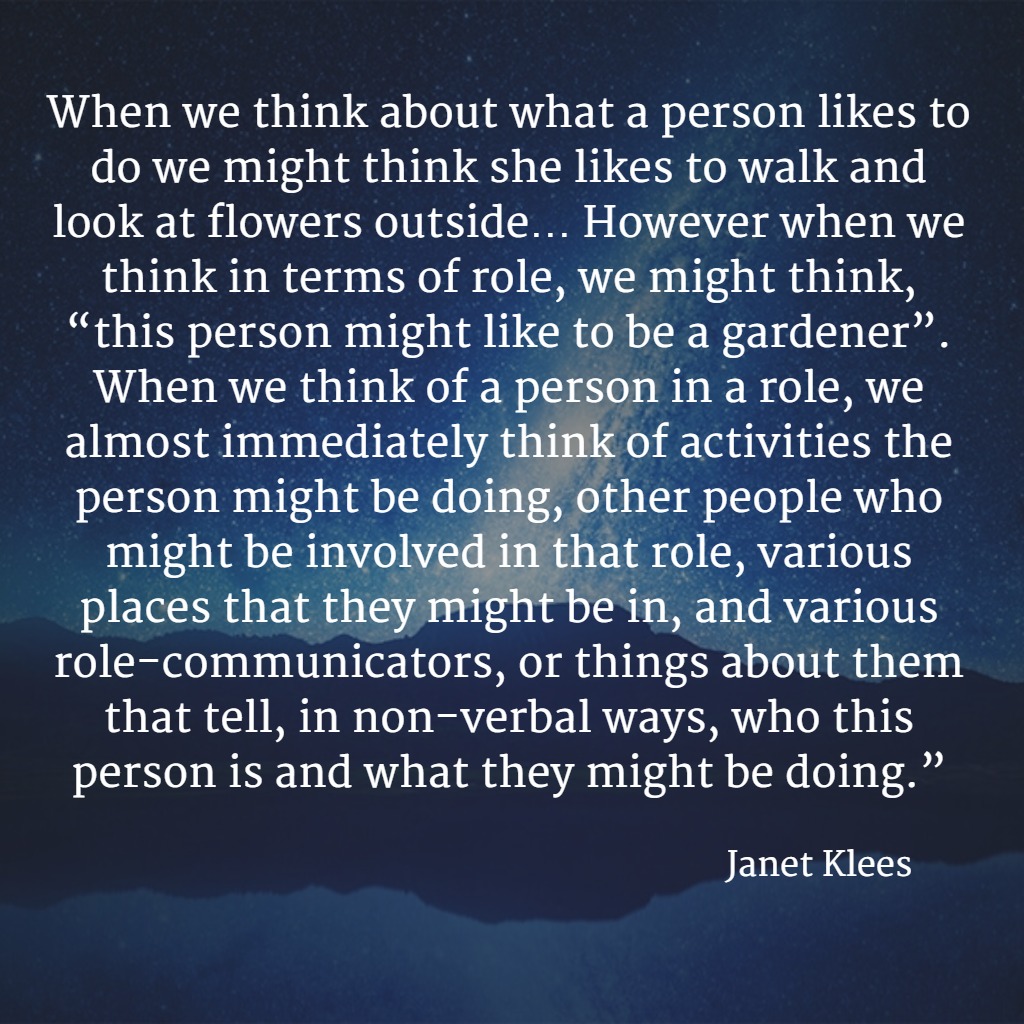
HOME, EDUCATION AND EMPLOYMENT
A Life Like Everyone Else
It is not possible to consider the Good Life and not think about relationships and being connected within your community. Being connected provides you with an opportunity to get to know people and relate to them as equals. This is how many of us build our relationships and networks, develop a sense of purpose and grow as individuals. Our home, our journey of education and our work are central to this connection within the community and provide us with many of our most valued roles.
For people with disability these areas have often been neglected, or the opportunities provided have been quite limited and unrecognisable to those in mainstream pathways. They can be seen as impossible, impractical or even unnecessary. These beliefs act as a major barrier for people with disability not only building lives in the community, but being seen as equal and valued members of those communities.
It is important to remember too that these elements develop, grow and change over our lives as we grow older, gain experience and come across new opportunities. Through them we meet new people, learn new things, spend time with friends and gain great satisfaction and joy. They offer clear signs about what is needed to live a good life and their presence and absence can have a big impact on a person’s quality of life.
In this section we share stories and ideas from people who have made this work for them and the opportunities has given them. This is as a reminder that a house is more than shelter, education is more than studying and being employed is about more than just getting paid. Whilst having a home, a meaningful education and a job does not guarantee a Good Life, they provide fertile soil for it to develop and grow.
Home
CRUcial Times 40 Presidents Report
Mike Duggan
![]() As someone who has a disability, my home is most important to me, dare I say even more important than it might be for some other people who do not share the vulnerabilities of many people with disabilities. Maybe this is because there are numerous situations where I feel disempowered, disenfranchised and oppressed. But in my own home I feel in control.
As someone who has a disability, my home is most important to me, dare I say even more important than it might be for some other people who do not share the vulnerabilities of many people with disabilities. Maybe this is because there are numerous situations where I feel disempowered, disenfranchised and oppressed. But in my own home I feel in control.
How genuinely supportive persons, agencies and systems can enable people to have real homes of their own
Michael Kendrick
![]() A “real” home is not solely one’s dwelling place, but rather a key crucible in life that helps sustain and uphold much that is deeply personal, private and intimate about ourselves and reflects our deep identity, values and preferences for a good life.
A “real” home is not solely one’s dwelling place, but rather a key crucible in life that helps sustain and uphold much that is deeply personal, private and intimate about ourselves and reflects our deep identity, values and preferences for a good life.
My Life My Home My Solution
Madonna Nicoll
![]() I dreamt of a day when I would live in a home of my own choosing, fill that home with my own personal touches, do what I wanted to do when I wanted to, live with people I chose, have parties and take part in life! A part of this was the opportunity to make my own decisions, make mistakes and learn from them and be successful.
I dreamt of a day when I would live in a home of my own choosing, fill that home with my own personal touches, do what I wanted to do when I wanted to, live with people I chose, have parties and take part in life! A part of this was the opportunity to make my own decisions, make mistakes and learn from them and be successful.
Education
The Families For Inclusive Education (FFIE) Project by CRU aims to resource families as they pursue an inclusive education for their child with disability.
This project has created a series of pages full of new content created by CRU. Here you will find resources on what quality inclusive education looks like in practice, including research on what works, laws and policies on inclusion, and current approaches to inclusion in class, in the playground and in all aspects of school life.
You will also find stories from families and educators pursuing inclusive education and practical tips on the “how” of successful inclusion and parent advocacy.
Dreaming Big, Standing Strong:
Queensland Stories of Inclusive Education.
Community Resource Unit Ltd.
Often it is said “seeing is believing”.
Holding a strong vision for inclusion can be tough when there are so many voices planting doubts about what is possible or still recommending a special, separate path for students with disability.
In this collection of stories we hear from graduate students, parents, and educators about the positive benefits inclusive education brings, as well as the barriers that still stand in the way.
Advocacy tips, including the importance of nurturing a positive vision, are outlined.
College is where life can begin again
Karin Melberg Schwier
![]() “I think the key to post-secondary education, for any of us, is that we go through a ‘coming of age’ process… Students we support go through that as well to better understand themselves, realize what might be possible and see a broadened series of possibilities.”
“I think the key to post-secondary education, for any of us, is that we go through a ‘coming of age’ process… Students we support go through that as well to better understand themselves, realize what might be possible and see a broadened series of possibilities.”
Why kindergarten is good for Elijah and Elijah is good for kindergarten!
Virginia Lonsdale
![]() Whilst Elijah requires some additional support to ensure that he can access all the learning experiences at kindergarten, he is an equal member of our community of learners. So, inclusion in kindergarten is good for Elijah but it also has great benefits for the other children.
Whilst Elijah requires some additional support to ensure that he can access all the learning experiences at kindergarten, he is an equal member of our community of learners. So, inclusion in kindergarten is good for Elijah but it also has great benefits for the other children.
Further Reading
Inclusion or segregation for children with an intellectual impairment: What does the research say?
Professor Bob Jackson and Queensland Parents of People with Disability
I choose Inclusion
Queensland Parents of People with Disability (QPPD), updated by Community Resource Unit Ltd. (CRU) in 2020
Inclusive Education Toolkit - For Parents
All Means All
Inclusive Education Toolkit - For Educators
All Means All
Employment
Autonomy, Employment and the Transition to Independence
Selina Maffey
![]() It is important to say that Angelica’s job was the first important routine after school that demanded a high standard and a commitment. She has sustained varied relationships at work and in the community. The skills Angelica has learnt from work have flowed onto the rest of her life. Real life has been Angelica’s best teacher, while the community has supported Angelica to enable this to happen.
It is important to say that Angelica’s job was the first important routine after school that demanded a high standard and a commitment. She has sustained varied relationships at work and in the community. The skills Angelica has learnt from work have flowed onto the rest of her life. Real life has been Angelica’s best teacher, while the community has supported Angelica to enable this to happen.
Employing people with disability is good (for business)
Graeme Innes
![]()
Employers assume people with disabilities won’t stay in jobs. In fact, research shows we stay longer than employees without disabilities. Many also assume people with disabilities will make a higher level of workers compensation claims. But we make fewer claims. And we’re better at dealing with the impact of our disability and are less likely to put ourselves at risk.
Employers also assume people with disabilities will take more sick leave when research shows we take less. We’re also more resilient and better problem solvers, bringing different experiences and perspectives to the workplace as a result of the challenges we face in everyday life.
So we’re the sorts of people employers say – and I believe do – want to have on board. The challenge is attitudes and assumptions.
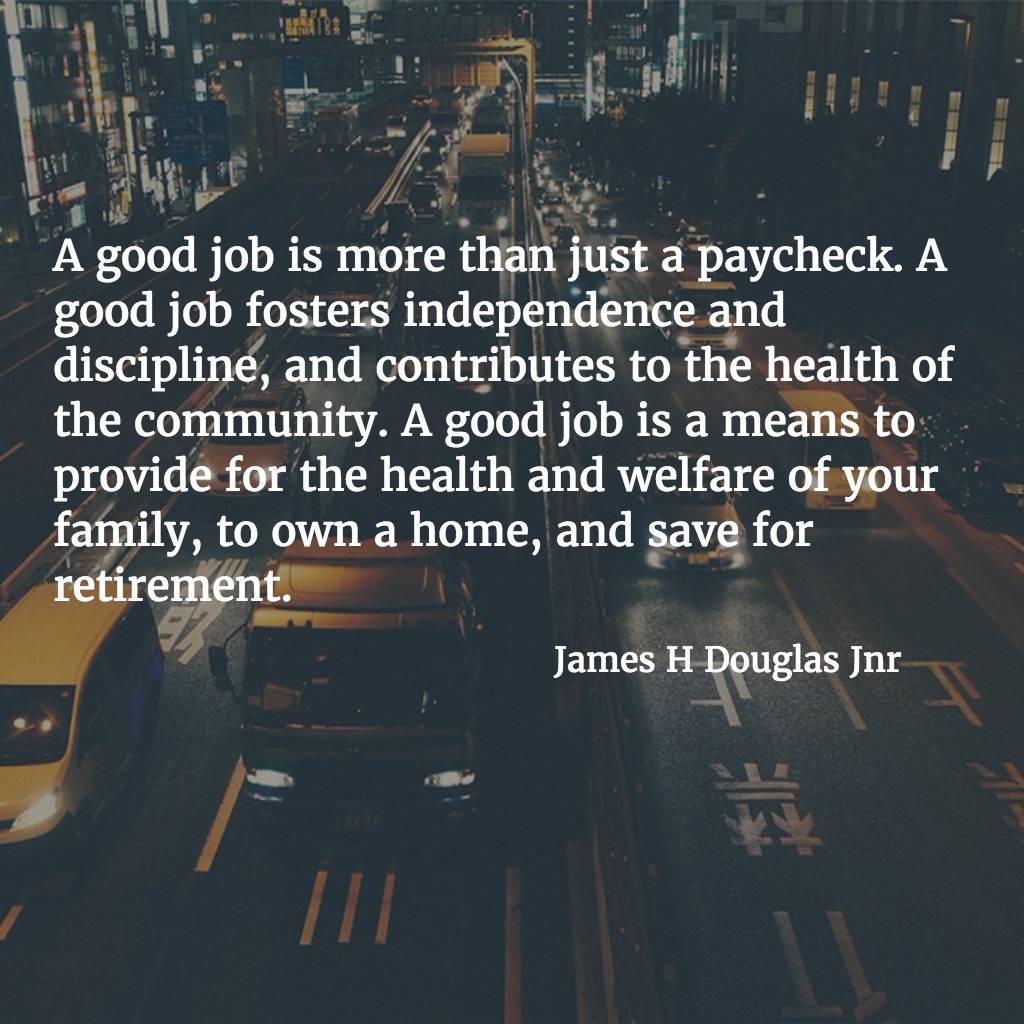
Workbook
Thought Sauce: Hot ideas for Cool Employment
This workbook by Griffin-Hammis Associates LLC offers foundational readings and activities that relate to Customised Employment.
Customized Employment utilizes an individualized approach to employment planning and job development–one person at a time and one employer at a time. Self-Employment, job creation, and job carving are all facets of employment approaches used in CE.


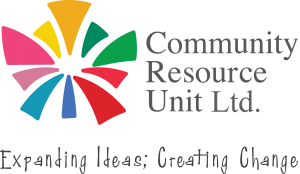

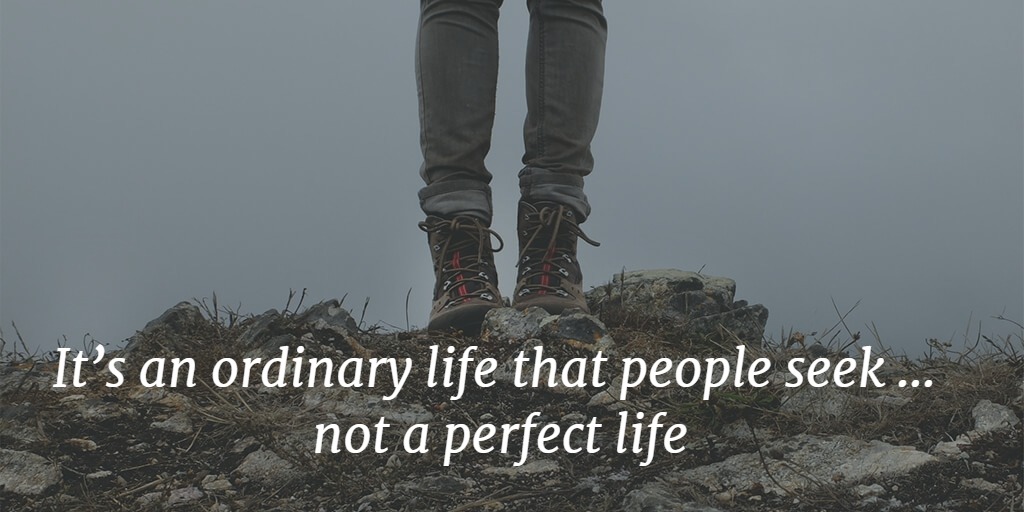
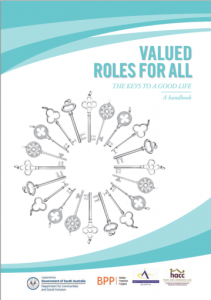
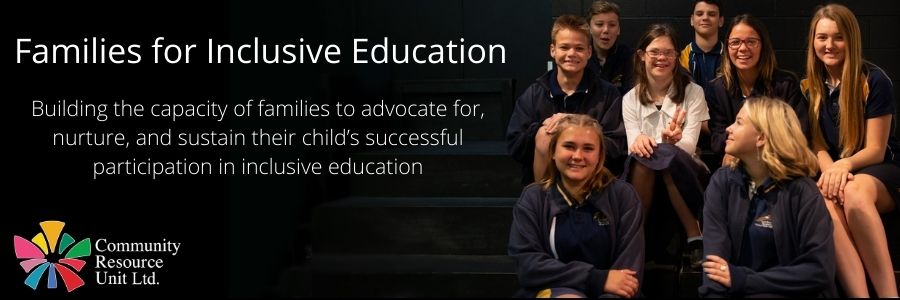
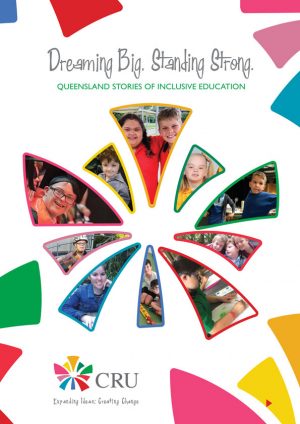

VALUED SOCIAL ROLES
Pathways to the Ordinary Things in Life